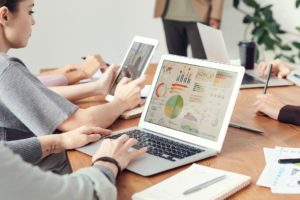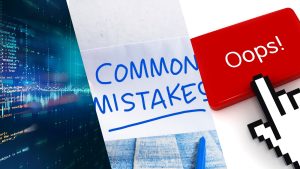Climate change has dramatically affected global communities in the last few years. The Australian bushfires have been a vital example of the drastic consequences a country can face due to increased temperatures. How else does climate change affect the public? Sometimes, the consequences of climate change are not as dramatic as instigating multiple bushfires, which destroy specific ecosystems of animals. There are ways climate change can affect the public directly, specifically in the roading industry. One crucial example is climate change’s significant impact on the aviation sector, which depends on weather patterns for flying. Another way climate change impacts a higher population of people is the impact it has on roading infrastructures. For example, heat can cause road infrastructures to experience potholes, road buckling, pavement cracking and more. This article will explain the extent to which this affects public safety to assess ways such risks can be mitigated.
How Does Damage to Road Infrastructure Affect a Country?
While road infrastructure is generally made to withstand weather patterns, they may not be equipped to handle the new challenges posed by climate change in the short, medium or long term. This makes roading infrastructure unreliable. This could be in terms of shortening the life cycle of roading infrastructure, whereby roading assets are susceptible to an increased number of damages, thus, constantly requiring road repairs and maintenance. Until such anomalies are rectified, the unhealthy condition of road infrastructure could lead roads to be closed for some time, thereby making it inconvenient for the public to move from one place to another. Road users will be at direct risk when the road manager has not identified a damaged infrastructure.
Understanding that the roading industry is a substantial national investment, countries find it hard to recover from situations where infrastructures are damaged. According to Australia’s Bureau of Transport Economics, the government annually spends over AUD 550 million just for the maintenance and construction of highways in Australia. However, suppose measures are not taken in response to climate change to reduce its effects in the roading sector. In that case, the annual maintenance is significantly expected to increase the maintenance of paved and unpaid roads. All this highlights the importance of implementing adaptation methods in reducing climate change’s impact on roading infrastructures.
Adaptation Methods to Reduce the Impact of Climate Change on Roading Infrastructure
According to Professor Ariyaratne, a Professor and lecturer at the School of Civil Engineering, roads bring communities together. Hence, highways and bridges play a critical link in road infrastructure. In the 53,000 road bridges in Australia, the government at present invests approximately AUD 200 billion every year to replace or maintain them. While the road to completely halt climate change is long, more feasible mechanisms must be implemented to prevent the maintenance cost from increasing. Here are a few ways road managers can do that:
Find Out Whether a Roading Asset Requires Repairs in Advance With Predictive and Prescriptive Maintenance
Any roading problem can be fixed as long as roading managers catch the issue early. The longer a roading asset suffers damage, the heavier the cost to repair it, and the harder it is to ensure the asset’s longevity. This is why it would be helpful to have technology such as predictive and prescriptive analytics to gain futuristic insights on the health condition of roading assets. Generally, road managers will first have to invest in low-cost IIoT sensors placed in multiple road assets to collect real-time data. Using this information and analysing it with historical data, predictive analytics can estimate that an anomaly has occurred. Road managers can address the problem by sending maintenance teams with this knowledge. As the problem is detected in advance, road managers can afford to wait till off-peak hours to rectify them instead of inconveniencing or endangering the public. Prescriptive analytics, on the other hand, assesses the capacity of the road manager and the most appropriate way to repair them. For example, if the roading sector is short on finances, prescriptive analytics will suggest which road should be rectified based on the number of road users that use the road daily.
Construct Sustainable Highways or Road With the Help of Digital Twins
Countries are constantly urbanising cities, towns and villages. Hence, new roading infrastructures are engineered continuously, designed and constructed. Road managers can now integrate digital twins to build more robust and sustainable roading infrastructures. This is done by having a digital replica of a roading asset monitored by carrying out various simulation activities to assess how it can withstand it. Hence, considering the new temperatures and wind conditions, road managers can test how infrastructures respond to such high rates virtually before constructing them. In other words, digital twins allow assets to be designed virtually and assess their feasibility without constructing them. This way, no energy, resources or finances are wasted.
Create a Contingency Plan For Disaster Management With the Help of GIS
GIS, the abbreviated term for Geographic Information System, is a technological tool that enhances the asset visualisation abilities of roading managers with hands-on asset monitoring and real-time tracking capabilities. GIS essentially help road managers to monitor infrastructures in entire cities, towns, states or even the whole country in one go. This makes it easy for the public sector to add criticality tags and prioritise maintenance according to them. It essentially summarises the status of an asset in one large map, making it easy for road managers to pin-points risks in one glance. GIS can highlight scalably, illustrate roading networks’ pavement and surface indexes separately, schedule maintenance and enable fast road condition diagnosis under one screen. This is a great tool to improve highway traffic safety and manage pavement, bridges, culverts and all other transportation infrastructure components.
Detect All Sorts of Road Cracks With CCTV
CCTV acts as a video recording and image capture tool that can smartly detect all sorts of transportation structural impairments within minutes. Roading managers that invest in it will be able to detect all kinds of road cracks, including wheel track cracks, alligator, transverse, longitudinal, and more. It can also detect potholes of various degrees and sizes, revelling, subsidences, bleeding, edge deteriorations, friction surfaces and more at its most initial stages. When any indication of infrastructure damage is highlighted, the roading manager is notified to rectify it. This allows the roading industry to prevent accidents among the public completely. The footage captured is generally stored in a cloud-driven platform for visual analytics. This eliminates the need for human staff to conduct physical inspections daily, thereby increasing labour productivity.
New Challenges Require New Technologies
Climate change is an issue which has been hard to control. With no way to first detect the number of emissions released to the environment due to the roading industry, for instance, how can a road manager assess whether sustainable practices are truly sustainable? This is why relying on technology has been a more feasible solution for this sector. A wide range of industry 4.0 technologies, including AI, ML, predictive and prescriptive analytics, IIoT, GIS, digital twins, and others, are solutions that can help the public sector save enormous costs in the long term and assure public safety more confidently.







